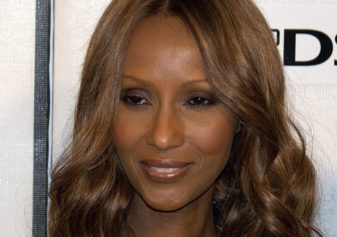Has outrage over the lack of diversity and racial insensitivity within the fashion industry reached its peak? If not, Thursday’s The New York Times article titled “Fashion’s Blind Spot” will certainly ring the alarm.
The powerful feature, written by the Times editor Eric Wilson, explores the blatant whitewashing of fashion runways, ads and companies, ultimately begging the question: why doesn’t the industry recognize it has a race problem? Wilson makes a strong argument that, despite efforts to combat the issue, the industry is still in denial and “nothing has changed.”
That sentiment is shared by Bethann Hardison, a former model and modeling agency owner, as well as supermodel-turned-mogul, Iman. These two ladies are leading the charge to inject some much-needed diversity into fashion.
Hardison, who founded the advocacy group Black Girls Coalition in 1989, told the Times that part of the problem is that “no one in power slaps these designers around.”
Taking it a step further, Iman suggested that a boycott might be in order. “It feels to me like the times need a real hard line drawn like in the 1960s, by saying if you don’t use black models, then we boycott,” Iman said. “If you engage the social media, trust me, it will hurt them in their pockets. If you take it out there, they will feel the uproar.”
And beyond simply boycotting the retail aspect of the industry (because how many people are really buying $3,000 purses on a regular basis?), image activist and fashion insider Michaela Angela Davis suggests that folks leverage the power of black Twitter to affect change.
It’s been done before. When news broke that juror B37 from the George Zimmerman trial had a book deal, it was the fury fueled by the collective tweets of black Twitter targeting the juror’s agent, Sharlene Martin, that ended the project altogether.
“Black Twitter is a force,” Davis told The Huffington Post. “I feel like Iman and Bethann could really get folks going after the board members and shareholders of the most egregious companies. There needs to be a decided outing of who’s doing this and who should be held responsible.”
Well, that’s exactly the plan. Next month at Fashion Week, Hardison will unveil a social media campaign aimed at outing specific designers who don’t employ black models for their shows (examples: Dior, Saint Laurent, Louis Vuitton and Chanel). Details of how the campaign will be executed are still being ironed out.
But will shaming these companies into submission really lead to long-term change? Adding a black model to a campaign and sprinkling a few of them into a Fashion Week show in response to the uproar is one thing, but diversifying the industry and causing an ideological shift is quite another. It’s smoke and mirrors versus a revolution.
“You don’t have to be black to understand the inequality,” Davis said. “I think a lot of the non-black people that know better are cowards.”
“You can’t tell me that you can look at a whole magazine with 237 looks and there’s no one of color and you don’t notice,” she continued, which is what happened with T magazine’s relaunch earlier this year.
“Of course it’s about having more black people at the table, but also it’s about having people with courage at the table that understand this is not modern, this is out of step, this is hurting every reader and every buyer of every color,” Davis said.
Edward Enninful, W Magazine’s style director, agrees — and he reminds us that patience is a virtue.
“Change always takes time,” he said. “The fashion industry needs to breed a whole different way of thinking. We need more diverse people working in all facets of the industry.”
Davis says the ongoing, unresolved problem makes it feel like the industry is trapped in Groundhog Day.
“How do we continue to have this conversation and also grow a collective self-esteem? It’s like going back to the boy that just said he’s not that into you — over and over and over again.”
Source: BlackVoices.com

